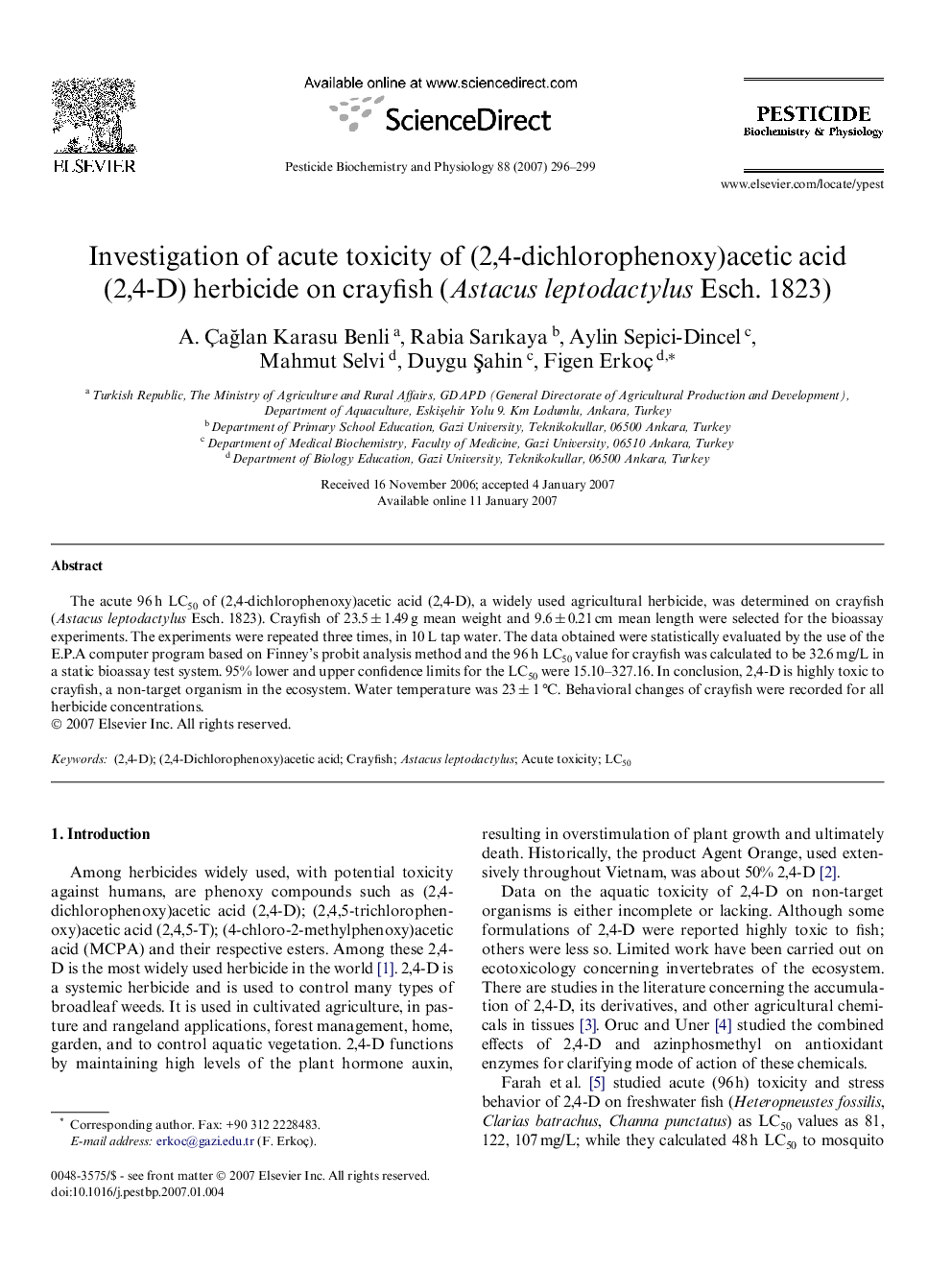| Article ID | Journal | Published Year | Pages | File Type |
|---|---|---|---|---|
| 2009843 | Pesticide Biochemistry and Physiology | 2007 | 4 Pages |
The acute 96 h LC50 of (2,4-dichlorophenoxy)acetic acid (2,4-D), a widely used agricultural herbicide, was determined on crayfish (Astacus leptodactylus Esch. 1823). Crayfish of 23.5 ± 1.49 g mean weight and 9.6 ± 0.21 cm mean length were selected for the bioassay experiments. The experiments were repeated three times, in 10 L tap water. The data obtained were statistically evaluated by the use of the E.P.A computer program based on Finney’s probit analysis method and the 96 h LC50 value for crayfish was calculated to be 32.6 mg/L in a static bioassay test system. 95% lower and upper confidence limits for the LC50 were 15.10–327.16. In conclusion, 2,4-D is highly toxic to crayfish, a non-target organism in the ecosystem. Water temperature was 23 ± 1 °C. Behavioral changes of crayfish were recorded for all herbicide concentrations.
